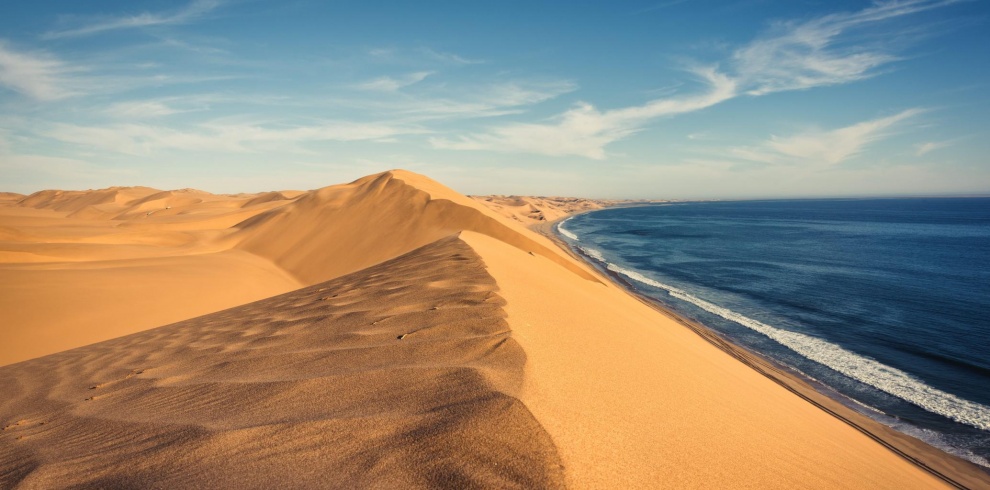Overview
Victoria Falls known as the “Smoke that thunders” in the local Tonga language, is the largest single curtain of falling water in the world and 70% of the exquisite views are seen from the Zimbabwe rain forest. The rain forest which has constant rain 24/7 from the never ending spray of the Falls, has unique ecosystem. It is a botanists dream and bird lovers’ paradise. There are species here that don’t occur anywhere else, and our recommendation is to look just a little beyond the pathway and the numerous viewpoints. One of the beauties is that the area has not become over commercialized. In fact, once you are standing by the Falls your view will not be much different to that of David Livingstone’s who first saw the Falls in 1855.Walking within the Falls is a couple of kilometres and it does get very hot.
The Okavango Delta is a unique pulsing wetland. More correctly an alluvial fan, the delta covers between 6 and 15 000 square kilometres of Kalahari Desert in northern Botswana and owes its existence to the Okavango (Kavango) River which flows from the Angolan highlands, across Namibia’s Caprivi Strip and into the harsh Kalahari Desert.
Each year the Okavango River discharges approximately 11 cubic kilometres (1.1 × 10¹³ litres) of water into the Okavango Delta. Most of this water is lost to transpiration by plants (60%) and by evaporation (36%) with only 2% percolating into the aquifer system with the remainder finally flowing into Lake Ngami.
The Okavango Delta is affected by seasonal flooding with flood water from Angola reaching the Delta between March and June, peaking in July. This peak coincides with Botswana’s dry season resulting in great migrations of plains game from the dry hinterland.
Highlights
- Are you visiting Kenya/Nairobi and is short of Time for a Safari? Travellers with limited time in Nairobi can still get an intimate glimpse of Kenya’s famous wildlife with a visit to the world’s only urban national park. This half-day tour to Nairobi National Park is a great way to optimize your time in the city, with hotel pickup and drop-off ensuring efficient and seamless transfer. Benefit from the personalized attention of your private guide, plus a choice of morning or afternoon departure to suit your schedule. See Four of the 'Big Five' and more in Nairobi National Park. Nairobi National Park is a true paradox. Despite being situated on the southeastern outskirts of East Africa's most populous, cosmopolitan and industrialized city, it is a genuinely worthwhile safari destination. Unfenced on two sides, it allows free movement of wildlife from the nearby Athi Plains (though not in and out of the city, for obvious reasons). The absence of elephants means it is not a true Big Five park, but still, it is one of the best places in East Africa for spotting black rhinos and witnessing lion kills. In addition, the sanctuary is home to most other plains wildlife species associated with southern Kenya, including large seasonal herds of wildebeest, zebra and gazelle, as well as lower densities of eland, giraffe and impala.








